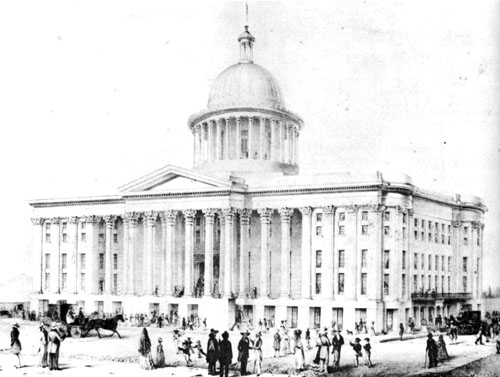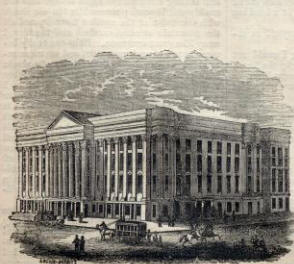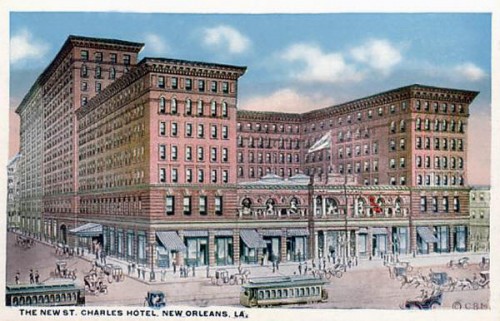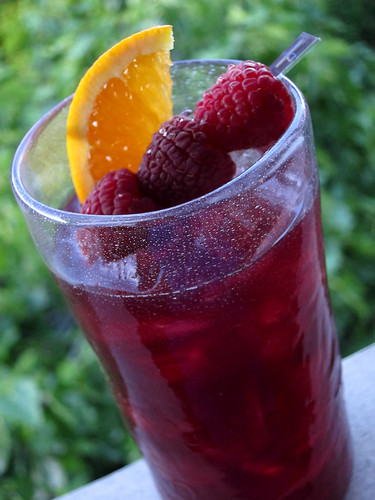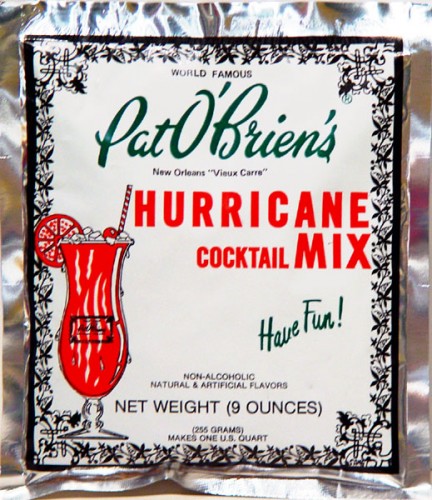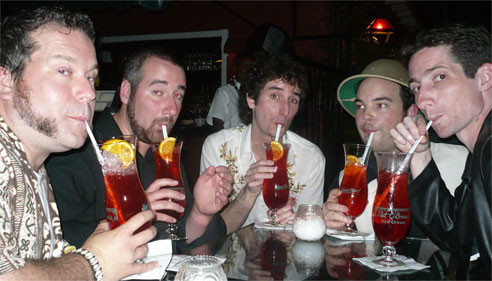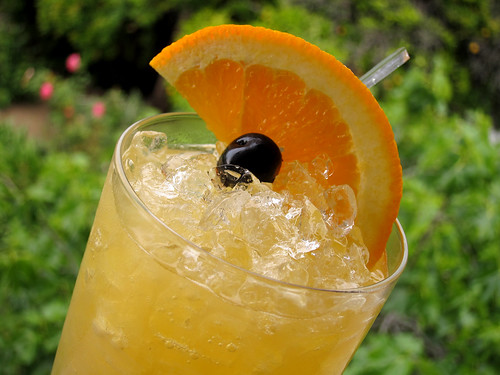Let’s put one thing on the table straight away — Jazzfest is great and always will be, and I had a great time. So much fantastic music and food, how can you not?
There were a few things I wanted to single out as being particularly good, though, plus the disappointments, plus something that makes me growl. I’ll throw in another few tidbits about the visit itself, not necessarily Jazzfest-related, because I’m a great big cheatin’ bastard.
The Good
Almost every single musical act we saw the entire time at the Fair Grounds (with a few quibbly exceptions). The Bester Singers, Chocolate Milk, the New Orleans Nightcrawlers, Theresa Andersson, Susan Cowsill (who’s always been good, but with her maturation as an artist in the last 2-3 years she’s become great), Sunpie & the Louisiana Sunspots, Paul Sanchez, Elvis Costello and his marvelous acoustic arrangements of his older material, nifty covers and his new stuff with the Sugarcanes, the Fleur de Ladies Brass Band (who kicked MAJOR ass), the astonishing New Orleans Spiritualettes, John Boutté, The Mardi Gras Indian Orchestra, The New Leviathan Oriental Foxtrot Orchestra, Henry Butler, Band of Horses, Sonny Landreth, Anders Osborne, Charmaine Neville, Clarence “Frogman” Henry (still got it!), Feufollet, my old schoolmate Tim Laughlin, Trombone Shorty (with special guest Mystikal), the Neville Brothers (still at it), and Big Chief Bo Dollis and the Wild Magnolias to take us out.
One thing that surely belongs in “The Good” was something I only heard about second-hand, unfortunately — Earth, Wind & Fire’s last-minute substitution for the missing Aretha Franklin. From all accounts they really tore it up, and although I wouldn’t have thought to go see them had they been scheduled, Wes and I both wish now that we’d made it over there to hear them.
Finally, in the music department, we were frequently very moved and touched by all the musicians who dedicated songs and shows to our friend Mary, who passed away on Mardi Gras Day this year. Paul Sanchez, Susan Cowsill, Tim Laughlin, Dave Alvin and more … although we miss her very much we felt good to see and hear how far and wide was her impact on people’s lives. We had a very, very special cochon de lait po-boy for her and our friend Dave, who left us last July. Jazzfest wasn’t the same without them but there were still there with us the whole time nonetheless. As Paul Sanchez said, “We celebrate life by releasing what’s in us. We celebrate life by remembering those who can’t celebrate life with us right now.”

Two great new additions to the Jazzfest food lineup made us very happy this year. The standout dish: Shrimp & Grits, by Fireman Mike. A truly amazing dish — plump shrimp in a creamy, slightly spicy gravy over cheesy stone-ground grits. Simple yet full of flavor and nicely filling, this was the only savory dish we went back for twice.
The other standout — La Divina Gelateria, open in New Orleans since mid-2005, made their debut appearance at the Fair Grounds this year, and if you ask me it was long overdue. Sure, we all love Angelo Brocato’s and their ices, spumoni and biscotti, but La Divina kept it exciting with a special feature, the Flavor of the Day — each day, something different. The first Friday’s flavor was Abinsthe Sorbetto, made with Lucid Absinthe and absolutely stellar. It was wonderfully creamy, with the alcohol content of the absinthe making smaller ice crystals leading to the creamier texture but with no cream content, a nice anise flavor and the broad herbal undertone holding it all up. Magnificent. The other flavors of the day were strawberry balsamico sorbetto, Bananas Foster, sweet potato, Creole cream cheese, pineapple-mint sorbetto and finally the amazing Coco Thai sorbetto, made from a coconut milk base with coconut, lime and Thai pandan leaf, very unusual and very delicious. Of the regular flavors, they offered café au lait, crème brulée, stracciatella and my favorite, Chocolate Azteca … rich and creamy dark chocolate gelato spiked with cinnamon, almond and hot chile. (Um, I had that three times. I ate a LOT of gelato and sorbetto at the Fest.) And on top of all that, we made friends with Carmelo and Katrina, the couple who co-own the gelateria, and they are super-nice folks.
Then there were the perennials, food-wise … the stuff that’s always there, and always good. We got our pheasant, quail and andouille gumbo from Prejean’s, the marvelous cochon de lait, soft shell crabs, Vaucresson’s sausages. But as happy as all that food makes me, the thing that’s kept me the happiest the longest, and has been a thread of food connection going back for more years than I realized, is the single most underrated and almost criminally under-noticed food item at Jazzfest: Creole’s Stuffed Bread, from Creole’s Lunch House in Lafayette.
For more years than I could remember (at least as I entered the Fair Grounds for Jazzfest for the first time this year), the first thing I’d do is head to the Creole’s Stuffed Bread booth, just to the left of the Crawfish Monica booth, where all the long lines are. Crawfish Monica is good, but I can make that at home. That simple-sounding but magical combination of ground beef and pork fresh sausage, slices of smoked sausage, spices, minced jalapeños and just enough cheese to hold it all together, inside a thin, crisp bread shell is just one of the best things I’ve ever had. They kick the everlovin’ ass of Natchitoches meat pies, which I find bland in comparison. I eat at least one Creole’s Stuffed Bread every day at Jazzfest and have been for many years.
I love them. And I adore the nice lady who makes them and sells them from that booth every year, Mrs. Merlene Herbert, who remembers me by face (if not by name) every year. The year after the storm and the Federal Flood, the very important and emotional Jazzfest of 2006, I made a beeline to her booth only to find out that it wasn’t there. I was horrified, and hoped that it wasn’t hurricane-related; Hurricane Rita, which slammed southwest Louisiana less than a month after Katrina devasted the Gulf Coast further east, largely spared the city of Lafayette. The news was bad, though — Miss Merlene’s husband had passed a few months earlier, and she couldn’t bring herself to do the months of work required to bake and freeze the large quantity the stuffed breads she needed to prepare for Jazzfest. I missed her and her food too much, so in the midweek between Jazzfest weekends as we headed to the annual crawfish boil we attend in Eunice, I made a detour to the Lunch House in Lafayette to see her and enjoy her food. She was astonished by our visit, and I wish we had had more time to spend with her, but unfortunately we had to take our breads to go in order to make it to the crawfish boil. (I was so hell-bent on Stuffed Bread that I passed right by a sign at a gas station in Opelousas that said “tasso sandwiches,” and I didn’t hear the end of that for about two years, but that’s another story.)
I was trying to remember exactly how many years it had been that I’d been happily gobbling down Creole’s Stuffed Bread at Jazzfest, and I asked Miss Merlene how long she had been vending at Jazzfest. “1989, honey … it’s been 21 years.” Wow. And although I don’t remember exactly how I stumbled across her dish, I know I was there in ’89, and have been enjoying them ever since.
I’ll tell a little secret, which I hope doesn’t get me in trouble. One day during Fest this year we went to see Miss Merlene as usual, money already in hand to pay for my Stuffed Bread. “Put that away, dawlin’,” she said. “This one’s on me.” Holy bejeebies … that was a first! It may have been a first-ever, as the younger man who was working in the booth with her did a double-take worthy of a Tex Avery cartoon, and the look on his face said, “She’s never done THAT before!” Well, folks, all I can say is … eat one every Fest day for 21 years and you might get a free one some day too.
Twenty-one years of Creole’s Stuffed Bread was very notable for me in “The Good” this year. May there be many more.
Finally … the rain. Rather, the relative lack thereof. Sure, we got a little soaked the first day, but it wasn’t too bad. Actually, the mud the next couple of days was worse, but the weather on the first Saturday and Sunday couldn’t have been more comfortable. This kept up until the second Sunday, last day of the Fest, when it did sprinkle a little bit but nothing remotely daunting. I don’t know what kind of deal Quint Davis made (not, one would hope, with the guy with the horns and the cape), but whatever he did, he did it right. No sooner had the Nevilles, the Radiators, the Wild Magnolias and all the other finishing acts played their last note when the weather started looking seriously threatening, giving us just enough time to walk back to our car and get inside before the rain, as Wesly put it, started “pounding down like a fucking monsoon.” Talk about timing.
Continue reading …



